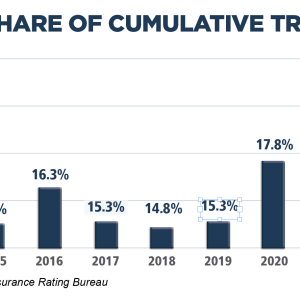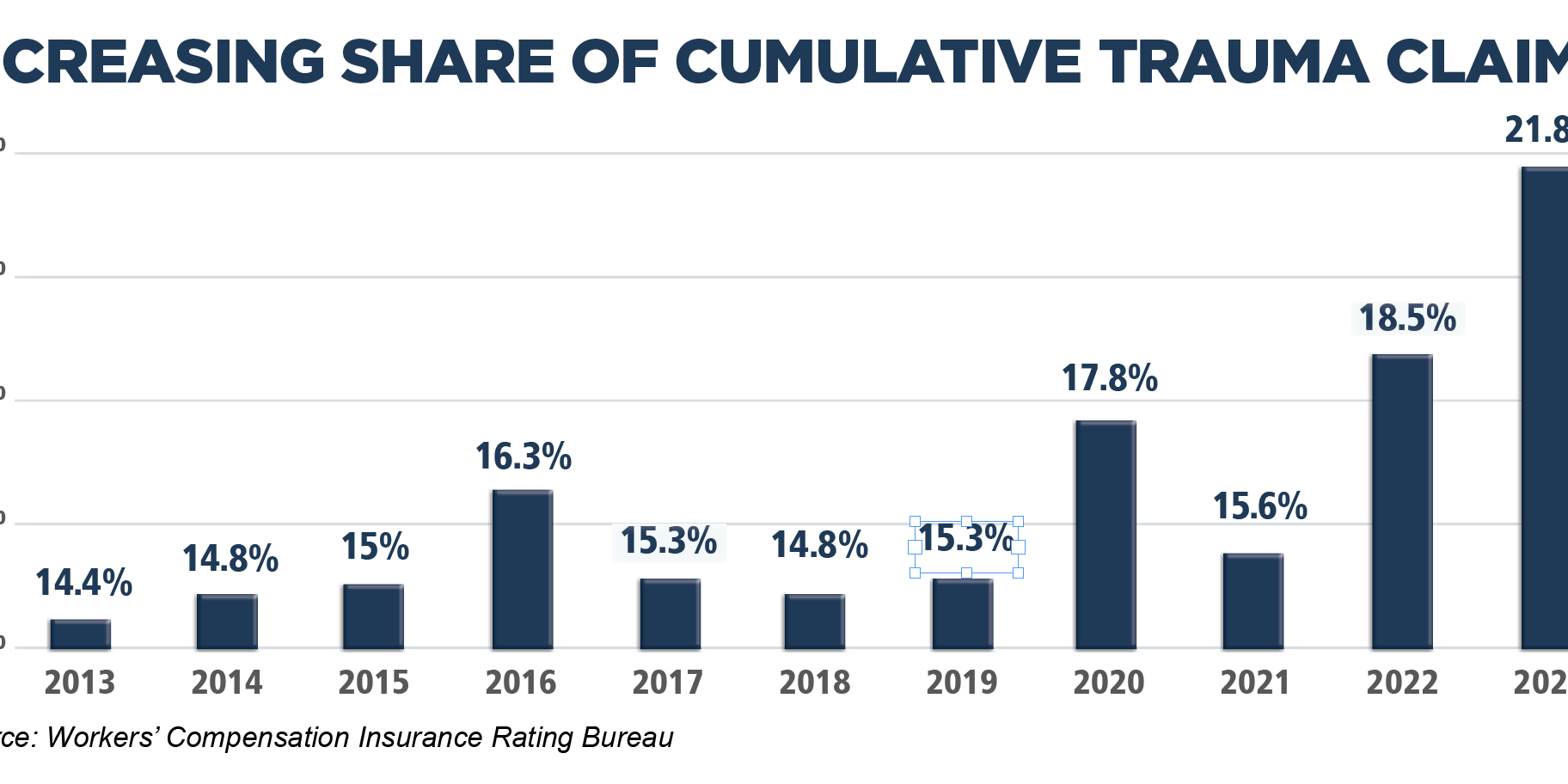
One of the largest writers of workers’ compensation insurance in California recently sounded the alarm about the growth of costly cumulative trauma claims in the state.
In a recent earnings call with analysts, the insurer, Employers Holdings, highlighted the drag these claims have on its results. This came a month after the Workers’ Compensation Insurance Rating Bureau noted in its recent rate filing the oversized impact of CT claims on overall workers’ comp claims. While some claims are legitimate, many are filed by workers after they are terminated, thanks to lawyers who approach them after they are laid off.
The typical claims allege gradual injuries sustained over years of repetitive motions, exposure or strain, rather than from a single accident or incident. They’re common in industries involving repetitive motion, heavy lifting or prolonged exposure to harmful conditions.
California is the only state that allows cumulative stress claims in workers’ compensation and one of only a few to permit claims after termination.
In 2023, CT claims accounted for 21.8% of all workers’ comp claims in the state, compared to 18.5% the year prior and 15.6% in 2021, according to the Rating Bureau.
CT claims often have similar characteristics:
- They are more likely to involve multiple injured body parts,
- Long delays between the time of injury and when the claim is filed, and
- Involvement of an applicant’s attorney hired by the claimant.
The Rating Bureau report found that:
- 40% of CT claims in California are filed after a worker is terminated.
- 98% of CT claims are litigated.
- Fully denied CT claims still end up costing over $10,000 on average, and many remain open even after five years.
The main injuries that workers claim when alleging CT:
- Soft tissue disorders 25%
- Dislocation and sprain 20%
- Carpal Tunnel Syndrome 13%
- Multiple injuries, including CTS 13%
- Mental & behavioral disorders 9%
The Rating Bureau found in a recent report that post-termination CT claims were initially less costly, but the longer they stay open, the more quickly costs accelerate.
That’s compared to regular CT claims filed by workers who are still working for their employer, which start off more expensive but tend to develop more slowly over time.
Example
The owner of a produce company said he had to lay off 46 workers, and a few of them started filing CT claims using the same attorney. Eventually, word got around among the other laid-off workers, and 16 of them had filed claims alleging CT injuries.
The firm’s workers’ comp carrier eventually set aside more than $500,000 in reserve for these claims. The employer’s X-Mod shot up to 350, and his premiums increased significantly as a result.
The takeaway
While these claims have long been a persistent problem in Southern California, they are spreading to other parts of the state, including the Bay Area and Sacramento, Katherine Antonello, CEO of Employers Holdings, said during the company’s earnings call in August 2025.
They’ve become such a burden on the system that California Insurance Commissioner Ricardo Lara acknowledged the rising frequency of these claims when approving a recent workers’ comp benchmark rate increase.
Employers should strive to reduce the risk of repetitive motion and cumulative injuries as part of good safety practice. At the same time, it’s important to document all injuries and near misses.
If a CT claim is filed, employers should conduct thorough investigations, meticulously document workplace hazards and training, and assess possible links between the injury and work.
Also check with your insurer to ensure the claim was filed within the state’s statute of limitations, which is one year. For post-termination claims, the clock starts on the worker’s last day of employment. For claims by active employees, the statute of limitations has not yet begun.


